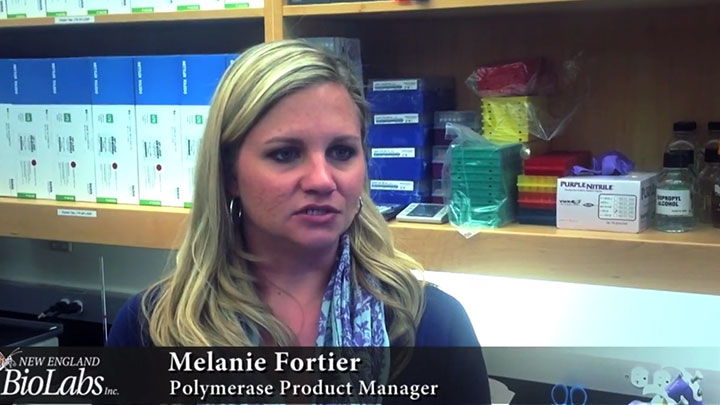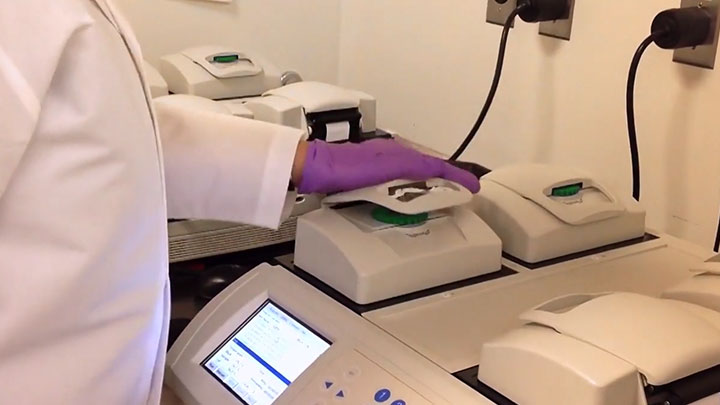
PCR
For routine, robust PCR reactions OneTaq DNA Polymerase is the most common choice of enzyme. This polymerase leaves predominantly template-independent single adenines (A) at the 3’ end of the PCR product. For high-fidelity PCR, a proofreading DNA polymerase should be used. Such enzymes do not create single base overhangs, leaving blunt termini. A consideration of the ends of PCR products, including their phosphorylation status, is important to subsequent cloning strategies (see End Modification). When PCR primers include restriction enzyme sites the PCR products can be digested and ligated by traditional means.
Vector molecules for cloning may also be produced by PCR. Restriction sites included in the primers allow generation of sticky ends (single strand overhangs) to facilitate cloning of restriction fragments. Otherwise, a blunt ended vector can be produced by PCR using a high-fidelity proofreading polymerase or by blunting of the single base 3’ overhang produced by Taq polymerase. Reverse transcription of RNA to first strand complementary DNA (cDNA) followed by PCR (RT-PCR) allows cloning of double-stranded DNA molecules that correspond to the gene transcripts (for mRNA, see the cDNA synthesis).
Choose Type:
- Comet Assay - Modified for Detection of Oxidized Bases Using the Repair Endonucleases Fpg, hOGG1 and Endonuclease III (Nth)
- Control Reaction Protocol for PreCR Repair Mix
- Sequential Reaction Protocol for PreCR Repair Mix
- Standard Reaction Protocol for PreCR Repair Mix
- Loop-mediated Isothermal Amplification (LAMP)
- Luna® Universal qPCR Master Mix Protocol (#M3003)
- Luna® Universal One-Step RT-qPCR Kit Protocol (E3005)
- Luna® Universal Probe One-Step RT-qPCR Kit Protocol (E3006)
- Luna® Universal Probe qPCR Master Mix Protocol (M3004)
- Luna® Probe One-Step RT-qPCR Kit (No ROX) Protocol (NEB# E3007)
-
Understanding Variability in DNA Amplification Reactions
-
Anatomy of a Polymerase - How Function and Structure are Related
Read about the relationship between Polymerase structure and function when copying DNA.
-
Polymerase Fidelity: What is it, and what does it mean for your PCR?
- Molecular Cloning Technical Guide
- PCR Reagents Brochure
- DNA Polymerase Selection Chart
- PCR Troubleshooting Guide
- Taq PCR Kit Troubleshooting Guide
- General Guidelines for Successful RNA Purification Using the Monarch Total RNA Miniprep Kit
- Guidance on Choosing Sample Input Amounts when Using the Monarch Total RNA Miniprep Kit
- Guidelines for PCR Optimization with OneTaq® and OneTaq® Hot Start DNA Polymerases
- Guidelines for PCR Optimization with Taq DNA Polymerase
- Guidelines for PCR Optimization with Thermophilic DNA Polymerases
Feature Articles
Brochures
Selection Tools
Troubleshooting Guides
Usage Guidelines
Products and content are covered by one or more patents, trademarks and/or copyrights owned or controlled by New England Biolabs, Inc (NEB). The use of trademark symbols does not necessarily indicate that the name is trademarked in the country where it is being read; it indicates where the content was originally developed. The use of this product may require the buyer to obtain additional third-party intellectual property rights for certain applications. For more information, please email busdev@neb.com.
This product is intended for research purposes only. This product is not intended to be used for therapeutic or diagnostic purposes in humans or animals.





